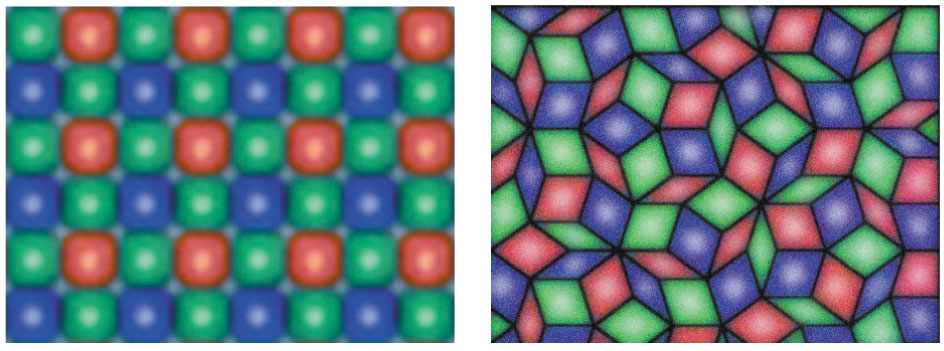Penrose Pixels
|
|

|
|
|
We present a novel approach to reconstruction based super-
resolution that explicitly models the detector's pixel layout.
Pixels in our model can vary in shape and size, and there may
be gaps between adjacent pixels. Furthermore, their layout
can be periodic as well as aperiodic, such as Penrose tiling
or a biological retina. We also present a new variant of the
well known error back-projection super-resolution algorithm
that makes use of the exact detector model in its back projec-
tion operator for better accuracy. Our method can be applied
equally well to either periodic or aperiodic pixel tiling.
Through analysis and extensive testing using synthetic and
real images, we show that our approach outperforms existing
reconstruction based algorithms for regular pixel arrays. We
obtain significantly better results using aperiodic pixel lay-
outs. As an interesting example, we apply our method to a
retina-like pixel structure modeled by a centroidal Voronoi
tessellation. We demonstrate that, in principle, this structure
is better for super-resolution than the regular pixel array used
in today's sensors.
|
|
Publications
Penrose Pixels for Super-Resolution,
M. Ben-Ezra, Z. Lin, B. Wilburn, and W. Zhang
IEEE Transactions on Pattern Analysis and Machine Intelligence (PAMI),
Vol.33, No.7, pp. 1370-1383, July 2011.
[LINK]
Penrose Pixelsxx; Super-Resolution in the Detector Layout Domain,
M. Ben-Ezra, Z. Lin, and B. Wilburn
IEEE International Conference on Computer Vision (ICCV),
Vol.X, No.X, pp.xxx-xxx, Oct, 2007.
[PDF]
|
|
|
Pictures
|
|
Related Projects
|
|